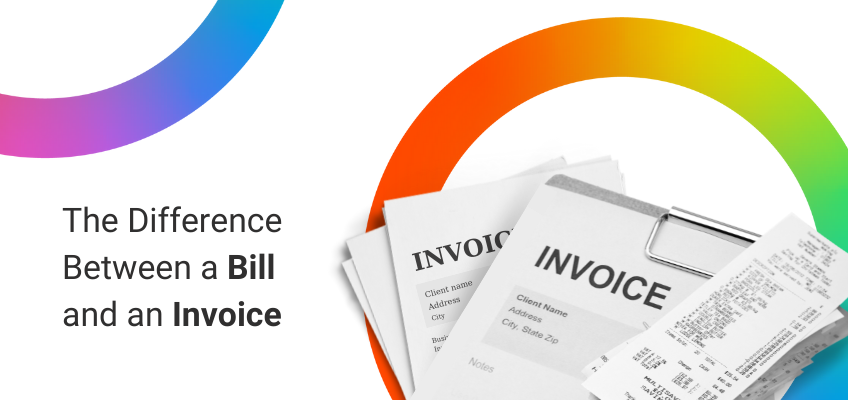
Bill vs invoice – what’s the difference between?
The difference between invoices and bill documents
Welcome to our guide on the differences between invoices and bill documents. As an eSeller, you’re familiar with these terms but may not know exactly what sets them apart. Not to worry, today we will tackle the topic of bills vs invoices. Many people use invoice and bill documents interchangeably, but these financial records have distinct meanings and purposes.
In this guide, we’ll explain the differences between invoices and bills and help you understand precisely when to use each one. We’ll break down the key components of each document and provide examples to help you better understand how they work. Whether you’re new to ecommerce or a seasoned pro, this guide will give you a solid understanding of these essential payment processing documents.
What is an invoice?
Let’s dive in on this topic: bill vs invoice. We begin with a discussion of an invoice a.k.a. a legal document that outlines the transaction details between a seller and a buyer. It’s a critical tool for businesses to get paid for their goods or services. Invoices can take different forms, including paper or electronic formats, for accounting purposes and can be customized to include specific details or branding.
Here are the key elements of an invoice:
- Customer’s contact information: This includes the customer’s name, address, email, and any other relevant contact information.
- Due date: This is the date by which the customer is expected to pay the invoice. It’s essential to include this information to ensure timely payment.
- Business contact information: This includes the name, address, phone number, email, and any other relevant contact information for the business sending the invoice.
- Invoice ID or number: This unique identifier for the invoice helps the business and the customer keep track of payments and records.
- Invoice date: This is the date the invoice was issued.
- Payment terms and deadlines: This includes the payment terms, such as the payment methods accepted and any applicable late payment fees or early payment discounts.
- An itemized list of goods or services provided: This includes a detailed description of the goods or services provided, including the quantity, unit price, and total amount due for each item.
- Total amount due: This is the final amount the customer must pay, including any taxes or discounts applied.
- Currency: This is the currency in which the invoice should be paid.
- Country of origin: This is the country where the goods or services provided originate from.
- Taxes or duties: This includes any applicable taxes or duties to the transaction.
By including these details in the invoice, the business can ensure that the customer has all the necessary information to pay the invoice on time and avoid any confusion or disputes.
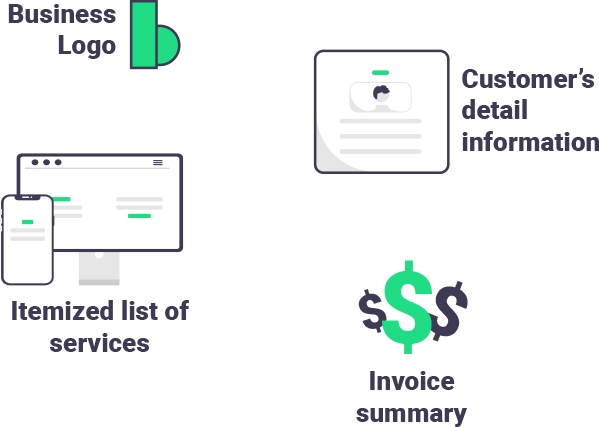

I'm ready for an easy invoice solution
Now let’s take a look at several examples of invoices:
Example 1: ABC Company has just completed a website design project for XYZ Corp. They send an invoice to XYZ Corp for the total amount due, which includes the following details:
- Customer’s contact information: XYZ Corp name, address, and email.
- Due date: Payment is due within 30 days of the invoice date.
- Business contact information: ABC Company name, address, phone number, and email.
- Invoice ID or number: INV-001.
- Invoice date: November 30, 2024.
- Payment terms and deadlines: Late payments will incur a 5% fee.
- Itemized list of goods or services provided: Website design services, including a detailed breakdown of the tasks completed, the hourly rate, and the total amount due for each task.
- Total amount due: $5,000, including all applicable taxes.
- Currency: US Dollars.
- Country of origin: United States.
Example 2: Jenny is a freelance graphic designer who just completed a project for a client. She sends an invoice to the client with the following details:
- Customer’s contact information: The client’s name, address, and email.
- Due date: Payment is due upon receipt of the invoice.
- Business contact information: Jenny’s business name, address, phone number, and email.
- Invoice ID or number: INV-002.
- Invoice date: January 15, 2022.
- Payment terms and deadlines: 60 days.
- Itemized list of goods or services provided: A detailed description of the design project, including the number of hours worked, the hourly rate, and the total amount due for each task.
- Total amount due: $1,500, including all applicable taxes.
- Currency: US Dollars.
- Country of origin: United States.
Example 3: Sam’s Bakery supplies cakes and pastries to a local coffee shop. They send an invoice to the coffee shop for the total amount due, which includes the following details:
- Customer’s contact information: The coffee shop’s name, address, and email.
- Due date: Payment is due within 15 days of the invoice date.
- Business contact information: Sam’s Bakery name, address, phone number, and email.
- Invoice ID or number: INV-003.
- Invoice date: May 10, 2023.
- Payment terms and deadlines: N/A.
- Itemized list of goods or services: A detailed list of the cakes and pastries supplied, including the quantity, unit price, and total amount due for each item.
- Total amount due: $500, including all applicable taxes.
- Currency: US Dollars.
- Country of origin: United States.
By including these details in the invoice, the business can ensure that the customer has all the necessary information to pay the invoice on time and avoid any confusion or disputes.
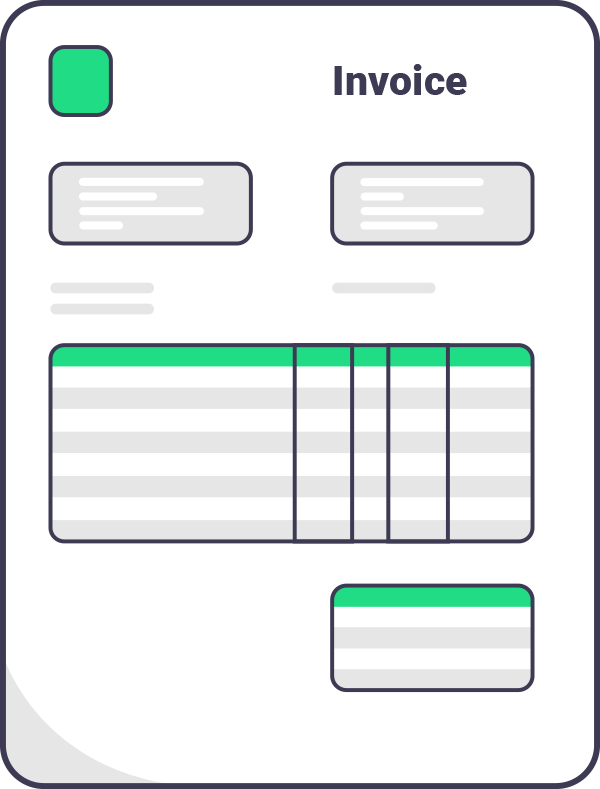

When are invoices used?
Invoices are typically used in business transactions where goods or services are exchanged for payment. They serve as a formal request for payment and provide a record of the transaction for both the buyer and seller. Invoices are used in various industries, including freelancing, retail, manufacturing, etc.
For freelancers, invoices are essential to getting paid for their work. Don’t forget, freelancers often work for multiple clients, and each job they complete requires a separate invoice. Therefore, freelancers need to keep track of their invoices to ensure they get paid for their work.
Invoices are also used in retail transactions, where businesses sell products to customers. When a customer purchases, the business generates an invoice to request payment. This invoice includes details such as the items purchased, the total amount due, and any applicable taxes or discounts.
In manufacturing, invoices are used to keep track of the cost of raw materials and the production process. When a business purchases raw materials from a supplier, they receive an invoice detailing the materials’ cost and any applicable taxes or fees. Similarly, when a business sells a product, they generate an invoice to track the cost of production and calculate its profit margin.
Invoices are also commonly used in service-based industries, such as consulting, accounting, and legal services. For example, when a service provider completes a job for a client, they generate an invoice to request payment for their services. This invoice includes details such as the time spent on the project, the hourly rate, and any additional expenses.
I'm ready for an easy invoice solution
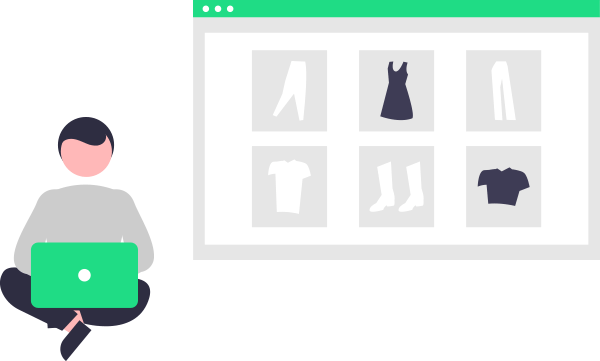

Online sellers who run ecommerce stores rely heavily on invoices to keep track of transactions and request payments from their customers. Invoices provide a clear record of financial transactions and help sellers stay organized and up-to-date with their sales and expenses. Invoicing is an essential aspect of managing an online business and can help sellers avoid confusion and disputes about payments.
At Payoneer, we understand the importance of invoicing and offer a range of tools and features to help freelancers and online sellers manage their invoices and payments with ease. Sign up today and discover how we can help you streamline your invoicing and payment processes.
One of the best ways for online sellers to create and manage their invoices is by using online service providers that create electronic invoices, such as Free Invoice Builder. This tool allows online sellers to create professional-looking invoices in minutes without technical knowledge or design skills.
This amazing program makes customizing invoices with your logo and branding easy. It includes all the necessary details, such as the customer’s contact information, due date, an itemized list of goods or services provided, and the total amount due.
With the help of technology, invoicing has become efficient & eco-friendlier. Electronic invoicing allows for invoices to be sent and filed entirely online, eliminating the need for paper documents. This increases efficiency and reduces the risk of errors.
For online sellers, powerful online tools can further streamline the invoicing process. The software saves time, reduces errors, and ensures that you get paid for your hard work, allowing you to focus on growing your business instead of worrying about invoicing.
I'm ready for an easy invoice solution
The different types of invoices
Since we’re going town on the differences between invoice and bill documents, let’s crank up the heat a little.
Invoicing is an essential part of any business, and choosing the right type of invoice is crucial to getting paid on time and managing your finances effectively. Choosing the right type of invoice for your business depends on several factors, such as the way you bill for your services and the industry you operate in.
In this section, we’ll discuss the five primary types of invoices that you should be familiar with. Understanding these invoice types will help you create professional-looking invoices that streamline your payment process and ensure timely payments.
By learning about the different types of invoices, you’ll be able to choose the right format and include all the necessary information. This will really help you create accurate and clear invoices that your clients will appreciate.
Whether you’re a freelancer, small business owner, or online seller, invoicing is an essential part of running your business.
Sign up with Payoneer today and start using our invoicing tools to streamline your payment process.


- Standard Invoice. The most common type of invoice, the standard invoice, includes all essential info, such as the recipient’s name, date, service provided, cost, payment method, as well as the invoice number. This type of invoice is typically used for straightforward transactions and is suitable for most industries.
- Final invoice. Final invoices provide a detailed breakdown of all services provided in large projects and are essential for collecting payment. They include all the necessary details from a standard invoice, ensuring clients understand what they’re paying for. This type of invoice is typically used in the construction and project management industries.
- Interim invoice. Interim invoices are essential for collecting payment for large, multi-stage projects in various industries such as consulting, software development, and marketing. Unlike final invoices, interim invoicing refers to periodic payment collection throughout the project’s duration rather than at the project’s end. These invoices help businesses to maintain steady cash flow and prevent any delays or disputes over payments.
- Commercial invoice. Commercial invoices are essential for businesses selling products internationally, as they are used to determine customs duties. These invoices must include critical information such as the product’s total value, a detailed description, both parties’ names, the countries of origin and destination, and the product’s weight. Commercial invoices are required for international shipments and are usually used in the manufacturing and retail industries.
- Recurring invoice. For ongoing work, recurring invoices are scheduled ahead of time and are similar to interim invoices. However, the primary difference is that recurring invoices are pre-scheduled and automatically sent at regular intervals, making them a convenient option for businesses and clients alike. This type of invoice is used in industries such as subscription-based services, retainer agreements, and long-term contracts.
Expert tips & best practices for invoicing
Invoicing is an essential part of any business, but it can also be a source of frustration and confusion for many eSellers. Many challenges come with invoicing, from managing multiple invoices to ensuring timely payments. However, following some expert tips and best practices can streamline your invoicing process and avoid common pitfalls.
One of the biggest bugbears of invoicing is managing multiple invoices. When you have multiple clients and projects, keeping track of all the invoices you need to send and receive can be challenging. This can lead to missed payments, delays, and even disputes. Another challenge is ensuring timely payments. Late payments can strain your cash flow and make it difficult to manage your business finances.
To overcome these challenges, following some expert tips and best practices for invoicing is essential. Here are some tips to help you get started:


- Find a system that works and sticks to it: Whether you prefer using online software or doing it by hand, having a concrete accounting system reduces errors and streamlines processes. Find a system that works for you and stick to it for clarity and organization.
- Keep it Simple: When creating invoices, stick to basics. Present the necessary information clearly & legibly for easy reading and comprehension. This helps streamline the payment and filing processes for both you and your clients.
- Add a Personal Touch: Consider adding a brief note thanking your clients for their business to maintain a cordial, ongoing relationship. This adds a human element to the invoice and fosters client loyalty.
- Brand Your Invoices: Including your logo on your invoices strengthens your brand identity and professional image. This sets your invoices apart and reinforces your brand with every transaction.
- Provide Detailed Descriptions: Include a brief yet detailed description of your work in the invoice. This ensures that your clients are clear on the services they are paying for and helps avoid any confusion or disputes. Plus, it ensures that you are paid fairly for your hard work.
- Set clear payment terms: Be upfront with your clients about your payment terms, including due dates and late payment fees. This will help to avoid confusion and ensure timely payments.
- Use online invoicing tools: Online invoicing tools can help you create professional-looking invoices quickly and easily. They also provide features like automated payment reminders and online payment options that can help you get paid faster.
- Keep accurate records: Keeping accurate records of your invoices and payments is essential for managing your business finances and filing your taxes. Use a spreadsheet or accounting software to keep track of your invoices and payments.
- Follow up on late payments: Don’t be afraid to follow up with clients who haven’t paid on time. Send friendly payment reminders and follow up with phone calls or emails if necessary.
Good job! We’re closing the gaps between a bill vs invoice. You guessed it, the next section is about bills.
I'm ready for an easy invoice solution
What is a bill?
A bill is a straightforward document that outlines the amount owed for a specific product or service. Unlike an invoice, it doesn’t provide a detailed work breakdown. Instead, it simply states the total amount due and is usually accompanied by a payment deadline.
Bills are often used for one-time purchases or services, such as a medical visit or a car repair. Therefore, paying bills promptly is important to maintain a positive business relationship and avoid late fees or penalties.
Here are some examples of bills that we’re all familiar with:
- Credit card bill: A monthly statement from your credit card company that lists all of your transactions for the billing period and the amount due.
- Utility bill: A monthly bill from your electricity or water company that outlines your usage and the amount owed.
Medical bill: A bill from a healthcare provider for services rendered, such as a doctor’s visit or hospital stay. The bill includes the cost of the services provided and any applicable insurance coverage.
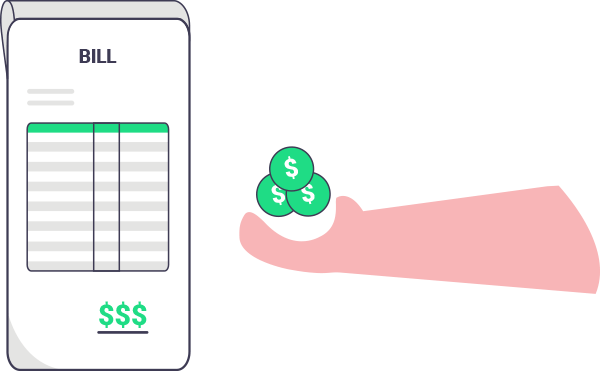

One of the most significant differences between bills and invoices is the amount of information they contain. Invoices provide a detailed transaction breakdown, including the customer’s contact information, the seller’s contact information, the date, the services provided, and the amount due. On the other hand, bills are more general and contain less information. For example, they typically only list the total amount due and the payment deadline.
Another important difference to note is the purpose of each document. Businesses typically use invoices to request payment from their clients for services rendered. They serve as a formal record of the transaction and are used for accounting and tax purposes. On the other hand, bills are received by customers from a business and are used to request payment for goods or services received. They act as a reminder of the amount owed and the payment deadline.
As an eSeller it’s necessary to understand the differences between bill vs invoice documents and their respective purposes to effectively manage your business finances. Using the right document for each transaction ensures that your financial records are accurate and that you receive timely payments.
Whether you’re a freelancer, a small business owner, or a consultant, understanding the nuances of invoicing and billing can help you streamline your financial processes and ultimately grow your business.
FAQs: the difference between invoice and bill docs

Q: Is it acceptable to send an invoice after receiving payment?
A: No, this is generally considered unethical as it would involve backdating the invoice. The invoice should always be issued before payment is received.
Q: What does the invoice due date mean?
A: The invoice due date is the deadline for the recipient to pay the full amount due. If the due date passes without payment, the invoice becomes overdue.
How long should businesses keep invoice records?
Most businesses keep invoice records for six to seven years, which is the minimum period required for tax and accounting purposes.
Q: Do invoice numbers matter, or can I create my system?
A: To keep track of your invoices easily, it’s best to use a numerical system that assigns a unique number to each invoice. This helps you stay organized and makes it easier to track payments and outstanding balances. If you use online invoice software, you can save even more time by letting the software automatically assign invoice numbers for you. This eliminates the need for manual numbering and reduces the chances of errors or duplications. But remember, the specific format of the invoice number is up to you and your business needs.
Q: Can bills be paid online?
A: Many businesses offer online bill payment options, a convenient way to quickly and securely pay your bills from anywhere with an internet connection.
Q: What should I do if I receive an incorrect bill?
A: If you receive a bill with incorrect information, such as an incorrect amount or billing date, it’s essential to contact the business right away. Be sure to provide any necessary documentation to support your claim and work with the business to resolve the issue.
We can help you understand the difference between invoice and bill documents
We understand that invoicing and payments can be daunting for small business owners and freelancers. That’s why we’ve created a platform for managing your invoices and bills. With our platform, you can easily create and send professional invoices, track payments, and even accept payments in scores of currencies. Our all in one solution is geared towards efficiency and ease of use.
Plus, with our easy-to-use dashboard and reporting tools, you can easily track your finances. Now that you know the difference between invoice and bill documents, you can confidently implement these tools into your operations.
We invite you to join the thousands of businesses that trust us for their invoicing and payment needs. So, sign up today and start exploring all that Payoneer has to offer!




